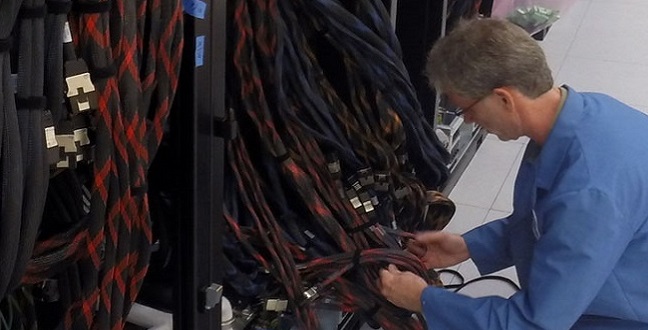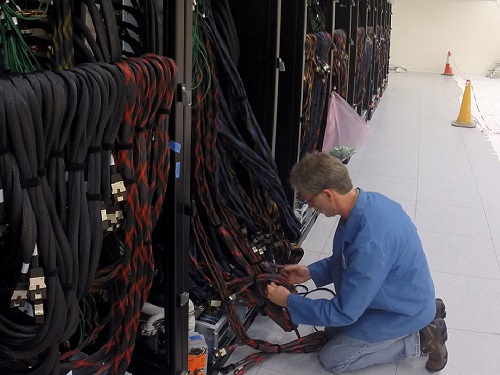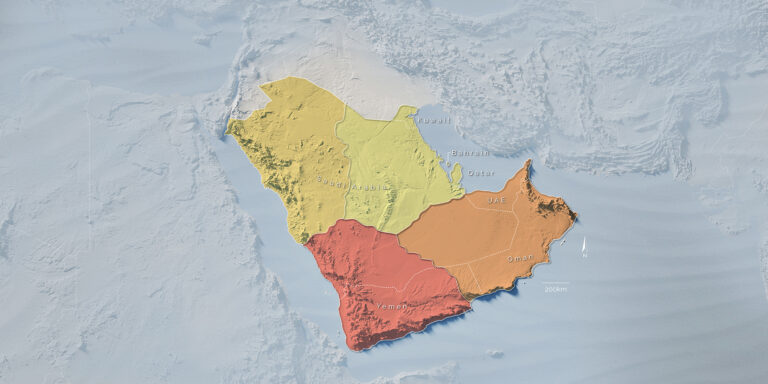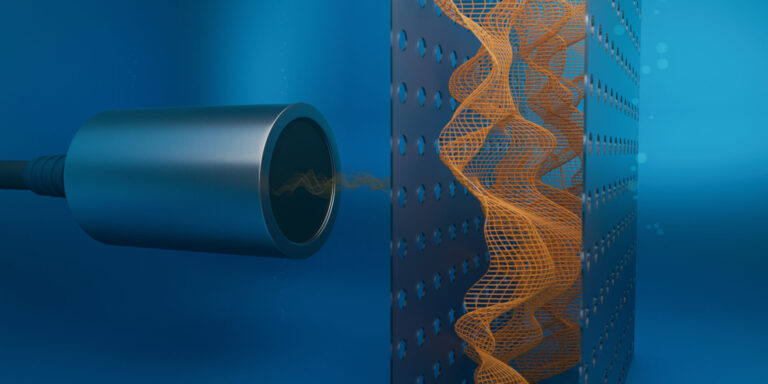Applied Mathematics and Computational Sciences
Taking computing to the next level
KAUST’s new supercomputer will enable ground-breaking scientific modeling and analysis in Saudi Arabia and worldwide.


Currently being installed, the Shaheen-Cray XC40 will come online in May 2015.
© 2015 KAUST
When scientists first powered up Shaheen in 2009, KAUST joined the ranks of the supercomputing elite. Shaheen, then the fourteenth most powerful computer in the world, quickly became indispensable. “About 20 percent of the faculty here use computing as the main way of driving discovery,” says David Keyes, Director of the Extreme Computing Research Center at KAUST.
Now, the university is ramping up the capacity for discovery with the new Shaheen-Cray XC40, a next-generation supercomputer which will go online this May. The facility was acquired and will be managed by the Supercomputing Core Lab at KAUST.
Keyes says the upgrade was not due to concern about the ranking of computing power. “It’s not a matter of vanity as everybody gets a higher-powered system,” he explains. “It’s actually a matter of being able to justify your operational expenses.” Alongside climbing costs for data generation, KAUST was confronted by looming hardware and software obsolescence, as IBM has discontinued development of the BlueGene supercomputer family to which Shaheen belongs.
KAUST put out a tender for manufacturers interested in building Shaheen’s successor, and the call was answered by Cray, a US company. The Seattle-based firm assembled a system with nearly 200,000 processors and the capacity to perform 5 quadrillion floating-point operations per second — a mathematical ‘gold standard’ metric of processor performance. This represents an approximately 30-fold boost over the first Shaheen, and Keyes notes that the new supercomputer is also six times more power efficient than its predecessor.
Cray also produced proprietary hardware features, such as ‘DataWarp’— an additional layer of memory that improves application performance — and a customized internal network configuration that enables the computer’s many processors to communicate efficiently.
Vladimir Bajic’s team at the Computational Bioscience Research Center will be among the first to make use of the new facility, planning to assemble, annotate and extract knowledge from vast collections of biological data — for example, modeling the interactions between networks of genes and proteins within a cell. “Shaheen-Cray XC 40 has a much better and more flexible architecture that allows us to use it efficiently for many problems we simply could not run on the old Shaheen,” says Bajic.
Geoscientist Georgiy Stenchikov is excited about the potential to accelerate his climate modeling investigations. “Our group was one of the most active users of Shaheen,” he says. “The new Shaheen will allow us to improve our spatial resolution by an order of magnitude, moving environmental research at KAUST to a new horizon.”
The new facility also offers added power for new faculty members such as seismologist Daniel Peter, who will use computational approaches to build sophisticated maps of our planet’s interior to predict earthquakes and locate natural resources, among other quests. “We describe it as a Human Genome Project for the Earth,” says Keyes.
Much of the research processed by the supercomputer will directly benefit Saudi Arabia. For example, Jean-Luc Brédas at the Solar and Photovoltaics Engineering Research Center is computationally modeling materials for next-generation solar cells to sustainably power the kingdom. His efforts are being complemented by those of Stenchikov’s group, which is generating data to address critical environmental issues — including identification of optimal locations for future solar farms. “We’re focused on in-depth analysis of extreme events like flash floods, dust storms and the combined effects of industrial activities and dust on air quality and climate over the Arabian peninsula,” says Stenchikov.
Many external groups will also benefit from Shaheen-Cray XC 40, including corporate partners like the Saudi Basic Industries Corporation, as well as academic collaborators overseas. KAUST is looking to develop a commercial data center for business clients, which could help defray the costs of running the supercomputer.
Keyes believes that the new Shaheen, which is Arabic for ‘falcon’, will also become a powerful shared asset for research universities throughout the region. “We would like to get the King Fahd University and King Saud University and other institutions on board and provide the opportunity to grow their faculty and graduate research in the direction of high-performance computing,” he says. The supercomputer’s capacity will inevitably become inadequate over time, but KAUST has ensured the system’s lifespan will be maximized.
As part of the deal, Cray has agreed to support a potential four-fold future upgrade in processing power. This could keep Shaheen-Cray XC 40 near the top of its class for up to seven years — giving KAUST’s supercomputer experts ample time to contemplate the possibilities for an even bigger and faster Shaheen. “We are aiming to be in the space of not just using supercomputers, but using our experience at the leading edge to be thinking about next-generation systems,” says Keyes.
You might also like

Applied Mathematics and Computational Sciences
Realistic scenario planning for solar power

Applied Mathematics and Computational Sciences
Bringing an old proof to modern problems

Applied Mathematics and Computational Sciences
Accounting for extreme weather to boost energy system reliability

Applied Mathematics and Computational Sciences
Past and future drought patterns across the Arabian Peninsula

Applied Mathematics and Computational Sciences
New pattern for underwater resonators

Applied Mathematics and Computational Sciences
Finer forecasting to improve public health planning

Applied Mathematics and Computational Sciences
Global look at sex differences in young people's mortality

Applied Mathematics and Computational Sciences



